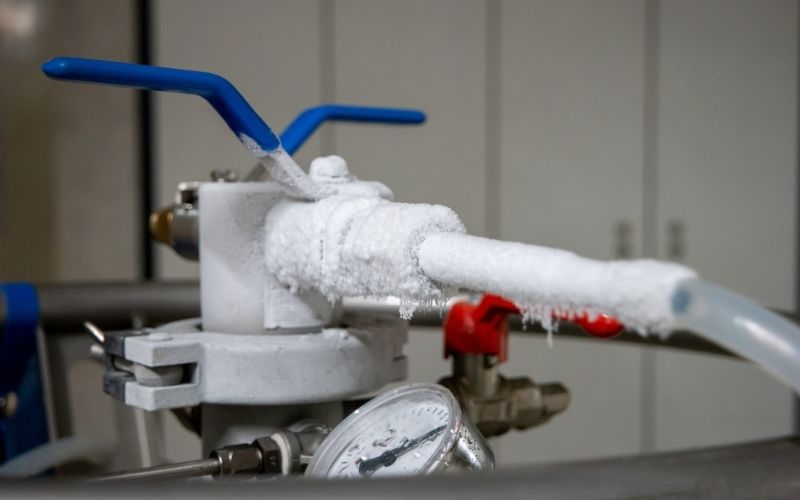It is perfectly acceptable, and in some cases even preferable, to install a water softener outside. Due to the units’ size, the noise during regeneration, and the general lack of aesthetic appeal, hiding a water softener in a garage or other concealed exterior place is the first choice for many people who don’t have room in their loft, basement, storage or utility room, or crawlspace. That being said, there are some important considerations to take into account before going ahead with an outdoor installation.
Power
Your unit needs to be fitted in close proximity to a power source, as it needs electricity to operate the valve that runs its cycles.
Water Entry Point
Depending on your water source, the entry point of your home’s water supply should either be close to your water meter (if you receive water from your local authority or city) or near the pressure tank (when you pump water from a well). Your water softener must be installed close to this point.
Accessibility
For installation, ongoing maintenance, and repairs, it’s necessary for your water softener to be in a convenient and easily accessible location.
Space
You will need adequate space in the area surrounding your unit so that the plumbing can be fitted and easily maintained. Nearby storage space is also important for the bags of salt you’ll need to top up the water softener’s brine tank.
Drainage
When your water softener goes through its regeneration cycle, it needs somewhere to drain the wastewater it produces, which contains the minerals from the hard water and is flushed out of the media tank.
Other Considerations
Climate and Temperature
Cold temperatures won’t do a water softener any good—if it’s cold enough to freeze, you could be looking at pipe blockages which will cause loss of unit function. Frozen water can also rupture drain lines that you’ll need to repair. Water softeners generally do better in warmer climates.
In the video below you will learn how to prevent your water softener drain line to freeze:
Sunlight
Direct sunlight has a wearing effect on most materials, and the plastic on your water softener tank is no different. To minimize deterioration, you should install the tanks under a small shed, lean-to, or another shaded area, such as against an exterior wall protected by the roof overhang.
In-ground
Where possible, the media tank from your water softener can be sunk into the ground so it is partially buried. The advantages of this method include better temperature regulation, and less above-ground space required, and it also acts as a deterrent against any local thieves. Be wary of choosing a spot that is far away from any trees or bushes, as their roots could cause issues.
Having a proper water filtration system for the health of your plants is important. When it’s not practical to install your water softener indoors, then outdoors is a perfectly viable option as long as you can protect it from the elements: Excessive sun, wind, and temperature changes can damage your unit and cause you time-consuming and potentially costly repairs. It’s best to speak to an experienced technician about where best to place your water softener to avoid any surprises further down the line.

